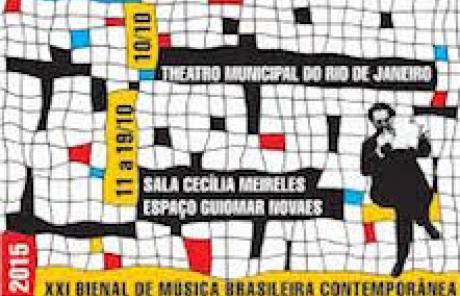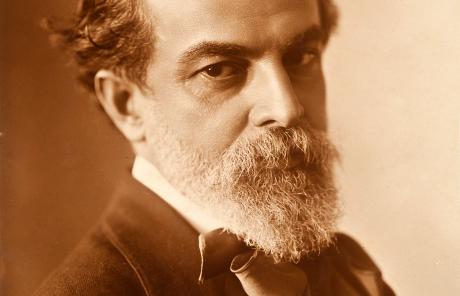Modinha is deeply rooted in Brazilian music and it is responsible for the romantic lyricism of our songs and for the tenderness, softness and lovingness found in our music. However, modinha has always transited between the classical and the popular, at times inclining to one side, at times to the other and, in other times uniting these two in a song.
Modinha was born popular, in rural Portugal, constituting what was known as Portuguese moda and it soon reached the urban environments along with those people who migrated from the country to the cities in the 17th century. According to Rui Vieira Nery, “In most countries the increase of the city population was, in large part, due to the growing influx of peasants, and the new city dwellers kept some cultural features typical to this rural origin”[1]. In this sense, in the urban setting, the Portuguese moda took its first steps towards erudition shaping itself like the literary songs, the Italian canzone and suites, fugues and sonatas from the German musicians. Nevertheless, Rodney Gallop stresses that “it is certainly difficult to tell to which extent the regional and urban songs influenced one another, mas there is no doubt that such interchange happened; happens(...)”[2].
The Portuguese moda would also be taken to the Portuguese colony in America, integrated to the migrating process that took a large contingent of people to Brazil in search of gold and precious stones in the mining region in the beginning of the 18th century. In this respect, the Portuguese moda takes on completely popular and secular features. Jesuit Nuno Marques Pereira in his Compendio Narrativo do Peregrino da America, whose first edition was from 1728, mentions songs he heard in Bahia that were so alarming to the extent that he stated: “And what would I tell you of listening to profane music? (...) that in any other place should they be avoided and punished with harsh penalties than in Brazil; by the profanity of modas and the poor sounding concepts”[3]. Bahia was indeed the stronghold of the Portuguese moda and, possibly, where it was known as modinha, as Vincenzo Cernicchiaro suggests: “La ‘Modinha’ fioriva nella classica Bahia, ove, del resto, nacque e crebbe. (Modinha prospered in classical Bahia, where it was born and established.) ”[4].
The Portuguese moda – always linked to the popular classes – propagated to other places like Rio de Janeiro and São Paulo and it incorporated the lundu practiced by the black community in the colony which was responsible for the languor that transformed moda into the Brazilian modinha. So, this popular and lascivious modinha reached Portugal where it would conquer the court and the society.
The Brazilian modinha reached Portugal through Domingos Caldas Barbosa whose father was from Portugal and mother from Angola. He got to know modinha and lundu when he was a young man living in Rio de Janeiro where he also developed his gifts for improvisation[5], with “distasteful expressions[6], and ended up being banished to Colônia do Sacramento where he fought to defend the territory. Caldas Barbosa went to Portugal to study law and canon at Coimbra University and he took the Brazilian modinha with him which was introduced and disseminated during the reigns of D. José I and D. Maria I and was highly appreciated by the court.
It was during this period that the Brazilian modinha peaked in erudition by incorporating the Italian opera which made it resemble a court aria and, in this sense, it lost its own characteristic features almost completely. With regards to this last aspect, the fusion did not please everyone. The English traveler William Kinsey, who also highlights that modinha was also considered a Portuguese national music, suggested that “It would be well if the Portuguese confined themselves to their native harmony, instead of attempting the Italian style[7]. And Portuguese author César das Neves went even further stating that “(...) many modinhas were popular due to their originality, but most of them were bumbling imitations of arias of Mozart, Bethoven, Cimarosa, etc., pretentiously overloaded with volatas, grupetos, trills and all vocal agility tricks which made this music ridiculous. ”[8]. Nonetheless, it is believed that modinha is largely responsible for the origin of the Portuguese opera and all modinha’s composers in Portugal were erudite from the opera or sacred music.
Modinha was so successful, though, that between 1792 and 1796 a specialized newspaper was dedicated to the genre, the Modinhas Newspaper, to which there were many contributions from French, Italian and English musicians. In this regard, foreign modinhas were also created, especially in France.
Modinha´s success, however, was not restricted to the upper classes in Portugal. According to Manuel Morais: “Modinha´s practice runs across all social groups, from nobles, to the bourgeoisie and the clergy (monastic and secular) reaching the servants and urban workers. (...) It was used, exploited and adulterated by all Portuguese social classes reaching the lowest ones by mimicry”[9].
It is perhaps because of this excessive use of modinha that a gradual lack of interest in the genre happened at the same time the royal family and the Portuguese court relocated to Brazil and took with them the, now classical, modinha.
Back to Brazil, modinha is initially appreciated by the elites, but becomes very popular as Mozart de Araújo highlights: “The court aria modinha gradually left the chandelier´s light to expand under the moonlit sky nights. And it disregarded the counterpoint of the harpsichord for the countermelodies of the serenading guitars”[10].
The French writer and historian Ferdinand Denis spent time in Brazil in the first decade of the 19th century and he accredited a uniquely popular feature to the modinhas of Brazil contrasting them to the erudition of the work of Rossini which was highly appraised in this period. According to this author:
“La musique [dans le Brésil] est cultiveé dans tous les états, ou plutôt elle fait partie de l’existence chez le peuple, qui charme ses loisirs en chantant, et qui oublie même les soins d’un pénible travail toutes le fois qu’il entend les simples accords d’une guitare ou d’une mandoline. Tandis que la musique de Rossini est admirée dans les salons, parce qu’elle est chantée avec une expression qu’on ne rencontre pas toujours en Europe, les simples artisans parcourent les rues vers le soir en répétant ces touchantes modinhas, qu’il est impossible d’écouter sans en être vivement ému; presque toujours elles servent à peindre les rêveries de l’amour, ses chagrins ou son espoir; les paroles sont simples, les accords répétés d’une manière assez monotone; mais il y a quelquefois tant de charme dans leur melodie, et quelquefois aussi tant d’originalité, que l’Européen nouvellement arrivé ne peut se lasser de les écouter, et cançoit l’indolence mélancolique de ces bons citadins qui écoutent pendant des heures entières les mêmes airs. ["Music in Brazil is cultivated by all segments, rather, it is part of people´s existence, which brings delight to their free time by singing and one even forgets about an excruciating work every time one hears the simple chords of a viola or a mandolin. While Rossini´s music is admired in the ballrooms because it is sung with an expression not always found in Europe, the simple artisans go through the streets until nightfall repeating the charming modinhas that are impossible to listen to without being vividly touched; they are almost always fit to represent daydreaming love, its sorrows or its hopes; the words are simple, the chords repetitive in quite a monotonous way; but, at times, there is a fascination in its melody, and at time great originality that the newcomer European cannot get tired from hearing, and the melancholic indolence of these good citizens who hear the same songs for hours is understood”[11].
Nevertheless, the Brazilian modinha was incorporated by national and foreign popular and classical musicians. Joaquim Manoel da Câmara did not know how to read musical score, but his modinhas were found in the Paris National Library. They were taken there by Sigismund Neukomm[12], who was Michael and Josephe Haydn´s disciple and who taught private piano lessons to D. Pedro I, who was also fond of modinhas.
In the beginning of the 20th century modinha became even more popular due to phonograms that enabled records to be played inside homes and, with them, modinhas and its singers and composers. Many other publications included modinha; there were others, however, that, although had the name modinha in the title did not present one song of the genre. The modinha that was once mistaken by lundu and the opera was now being diluted in the rhythmic waltz and it was gradually settling after nearly two centuries of existence.
Author: José Fernando Saroba Monteiro
[1] Licensed in History by the University of Pernambuco, Specialist in Communication and Image Theories by Federal University of Ceará and Master´s student in History of the Portuguese Empire (e-learning) through Universidade Nova de Lisboa.
[1] NERY, Rui V.; MORAIS, Manuel. Modinhas, Lunduns e Cançonetas. Lisboa: Imprensa Nacional-Casa da Moeda, 2000, p. 10.
[2] GALLOP, Rodney. Cantares do Povo Português. Lisboa: Instituto de Alta Cultura, 1937, p. 17.
[3] PEREIRA, Nuno Marques. Compendio Narrativo do Peregrino da America. Lisboa: Officina de Manoel Fernandes da Costa, 1728, pp. 227-228.
[4] CERNICCHIARO, Vincenzo. Storia dela musica nell brasile: Dai tempi coliniali sino ao nostri giorni (1549-1925). Milano: Stab. Tip. Edit. Fratelli Riccioni, 1926, p. 55.
[5] TINHORÃO, José R.. Domingos Caldas Barbosa: O poeta da viola, da modinha e do lundu. São Paulo: Editora 34, 2004.
[6] VARNHAGEN, Francisco A. de. Domingos Caldas Barboza. Revista do Instituto Histórico e Geográfico Brasileiro – RIHGB, Tomo XIV, 1851, pp. 449-460, p. 449.
[7] KINSEY, William. Portugal Illustrated: In a series of letters. London: Treuttel, Würtz, and Richter, Soho Square, 1828, p. 68.
[8] NEVES, Cesar das; CAMPOS, Gualdino de. Cancioneiro de musicas populares. vol. II. Porto: Typ. Occidental, 1893, p. XV.
[9] BARBOSA, Domingos Caldas; MORAIS, Manuel. Muzica Escolhida da Viola de Lereno (1799). Estudo introdutório e revisão de Manuel Morais. Lisboa: Estar, 2003, pp. 82-84.
[10] ARAÚJO, Mozart de. A modinha e o lundu no século XVIII: Uma pesquisa histórica e bibliográfica. São Paulo: Ricordi, 1963, p. 12.
[11] DENIS, Ferdinand. Résumè de l’histoire littéraire du Portugal, suivi du résumé de l’histoire littéraire du Brésil. Paris: Lecointe & Durey, 1826, pp. 581-582.
[12] ARAÚJO, Mozart. Sigismund Neukomm: Um músico austríaco no Brasil. Revista Brasileira de Cultura, ano 1, nº 1, jul./set. 1969.
This article is an excerpt of a thesis titled “The Brazilian modinha: trajectory and velleity (from the 18th to the 20th century)”, developed in the Master´s program of the Universidade Nova de Lisboa.




